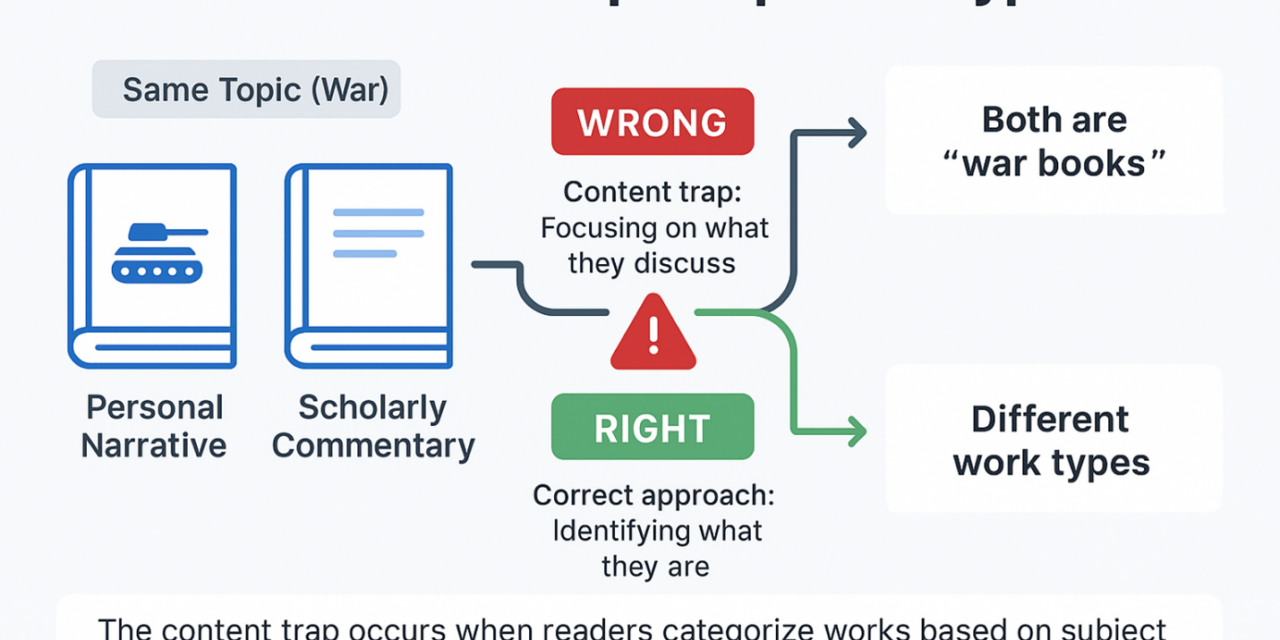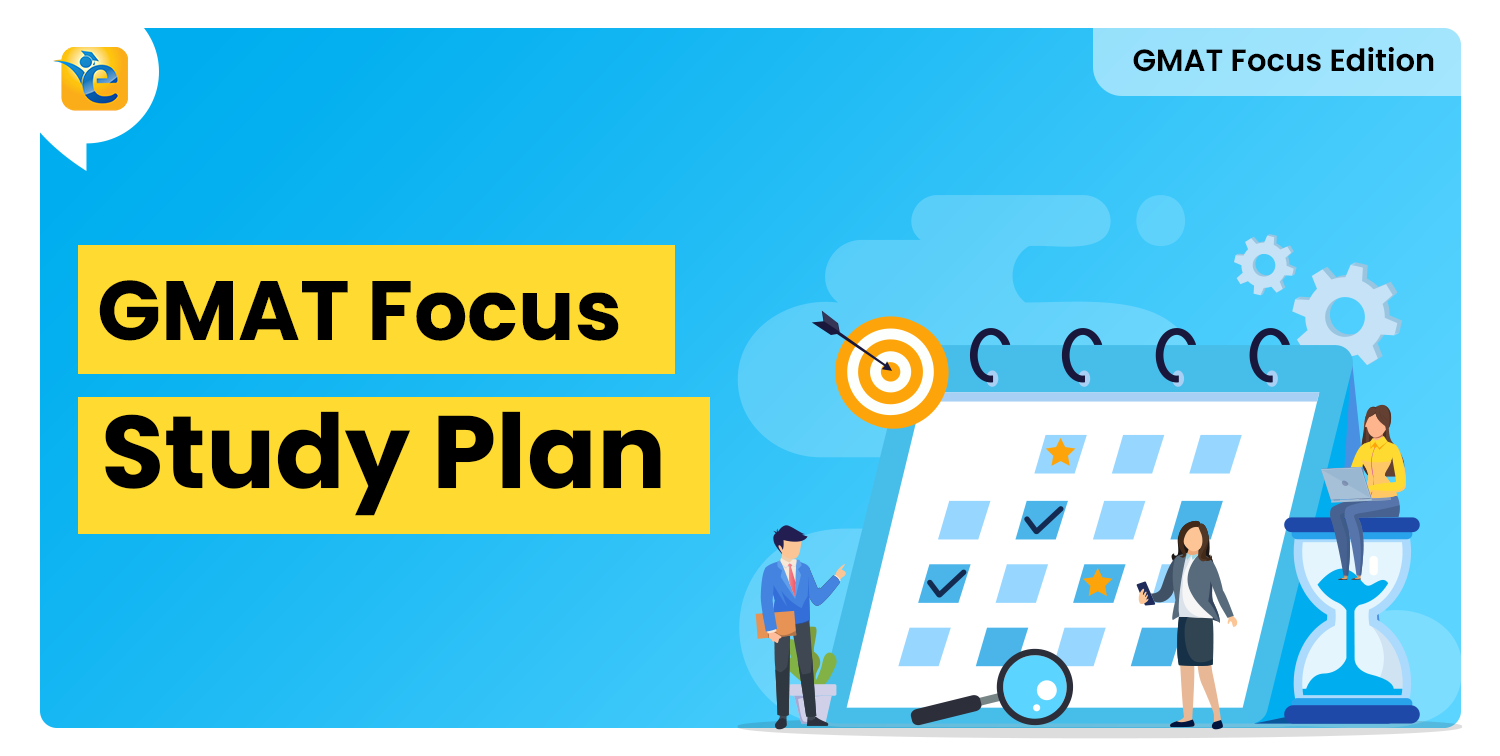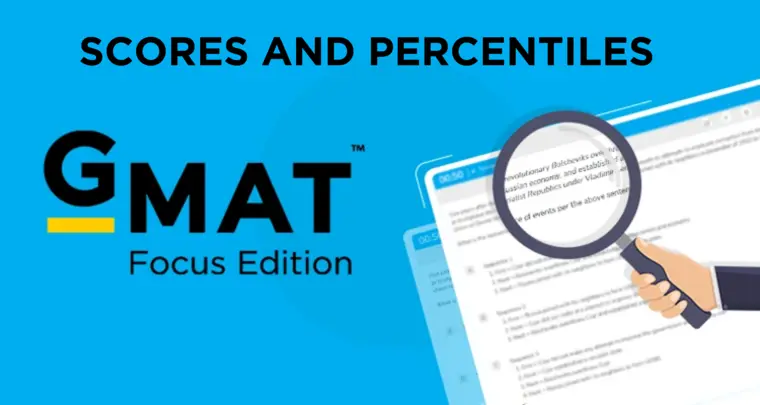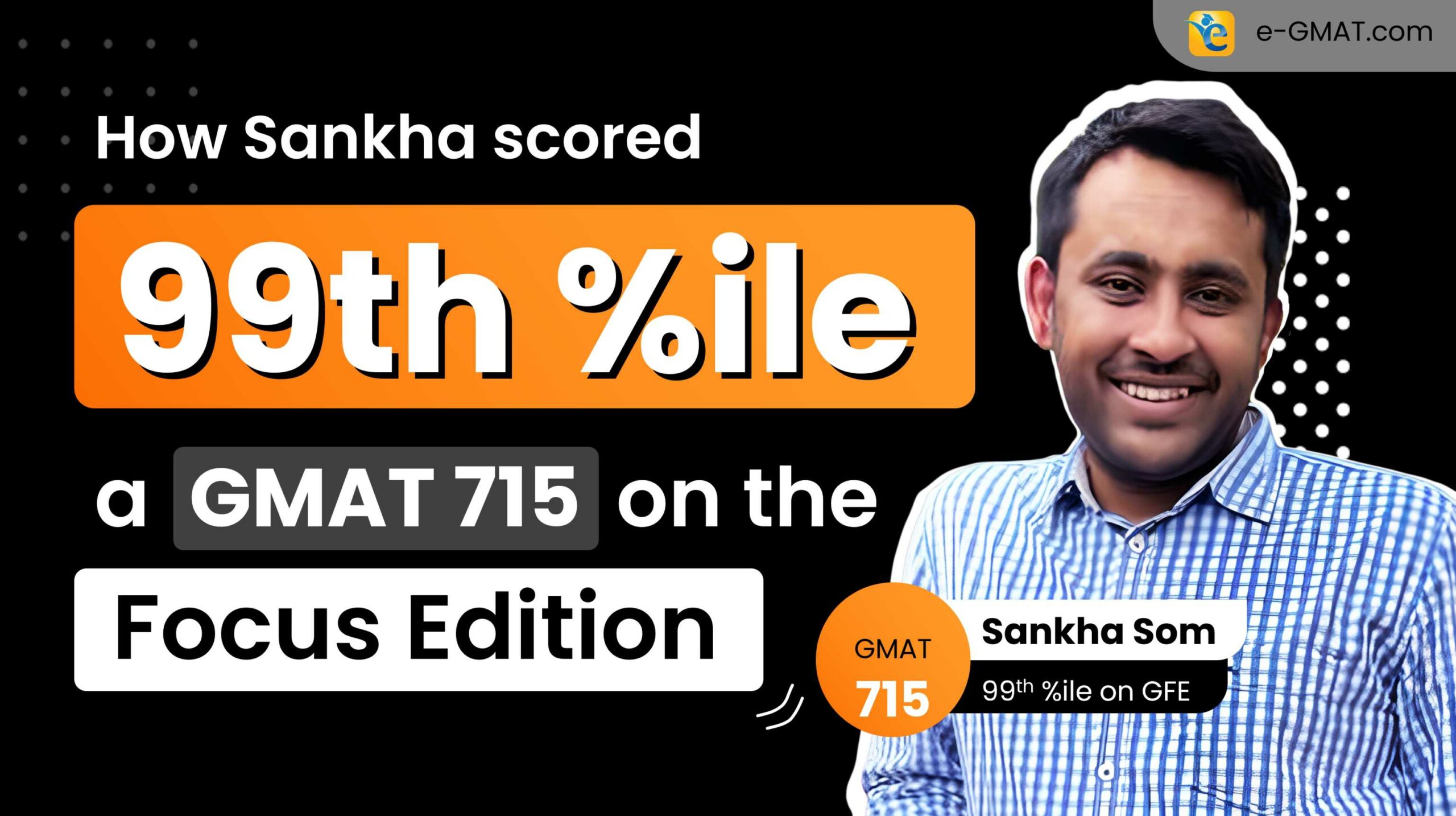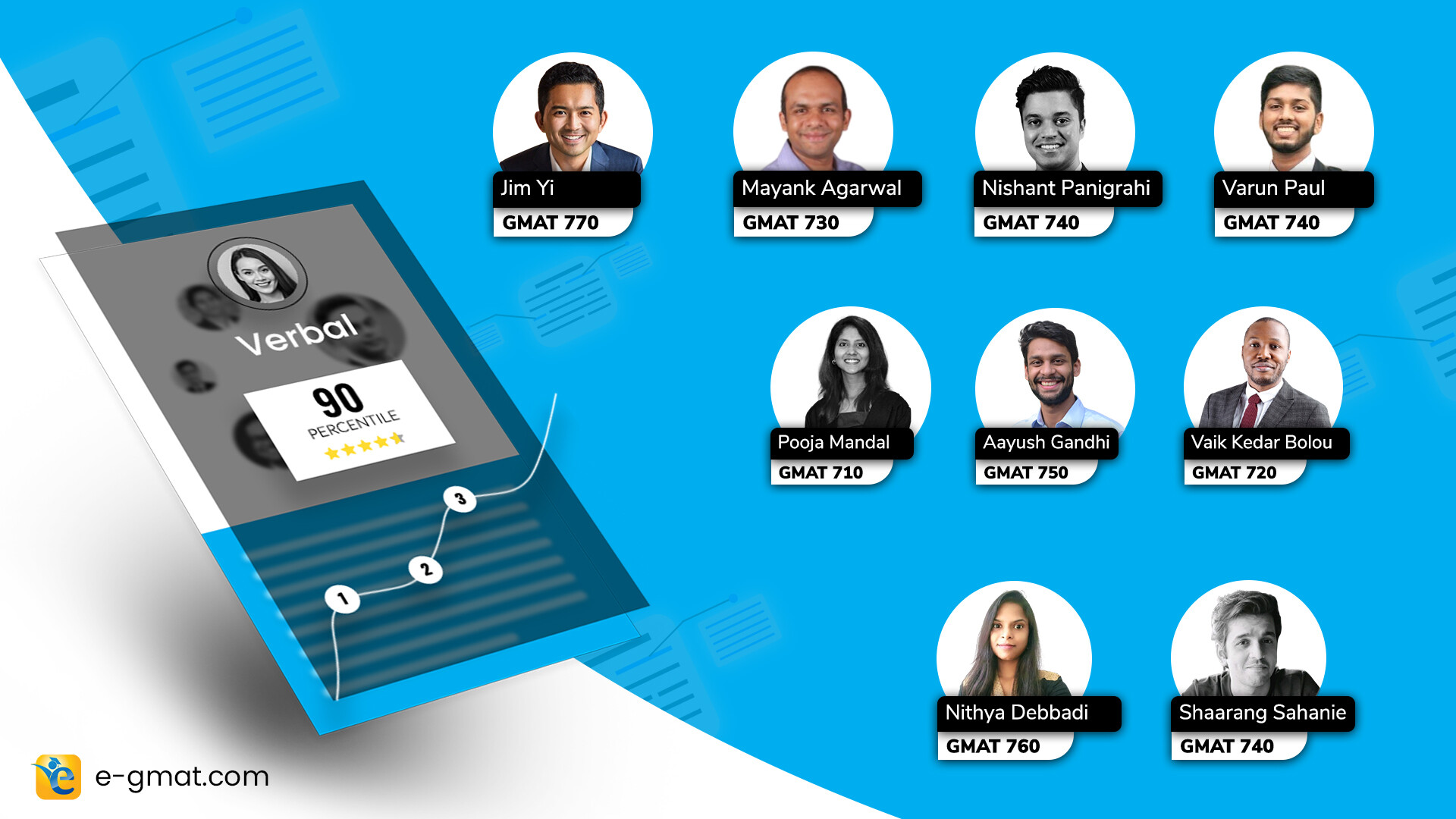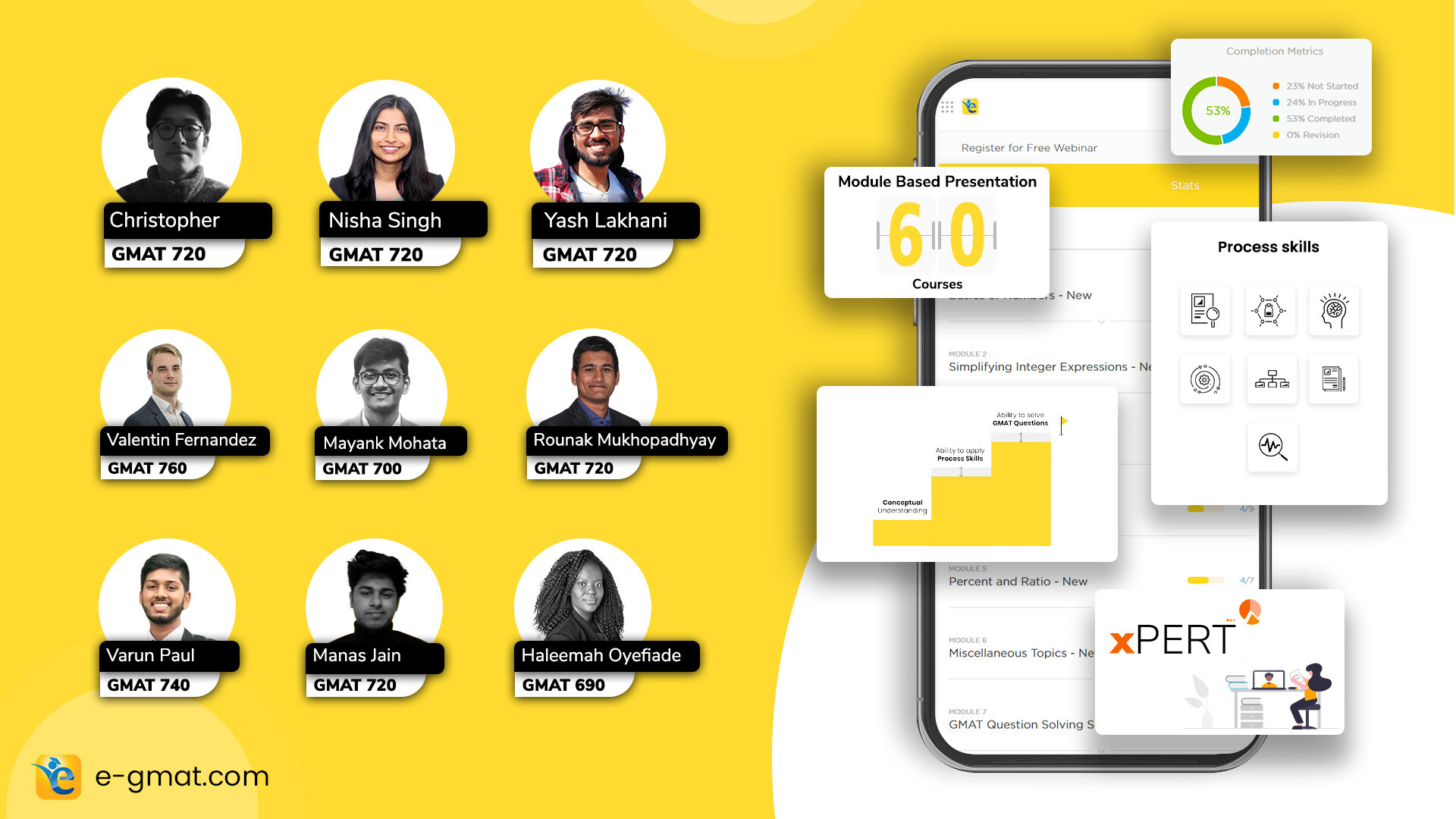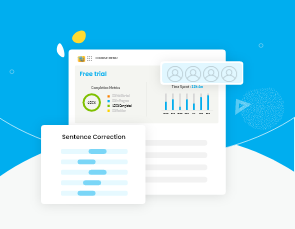Every day, readers make split-second decisions about the books, articles, and documents they encounter. Is this a memoir or a biography? A scholarly analysis or a historical survey? A collection of works or a commentary about works? These distinctions matter far more than most people realize, especially when precision is crucial—like on the GMAT RC.
The challenge isn’t that these categories are inherently difficult to understand. The problem lies in a common mental shortcut: we often categorize works based on what they discuss rather than what they fundamentally are. This “content trap” leads even careful readers astray, causing them to confuse subject matter with purpose and format.
⭐ Key Insights from This Article:
Understanding the “content trap” is crucial for GMAT RC success. You’ll learn:
- Why students confuse content with purpose in literary categorization
- How the GMAT specifically tests this distinction
- A systematic 3-step framework for accurate work identification
- Practice exercises with detailed explanations
This approach will help you avoid common categorization errors and improve your RC accuracy.
The Root of the Problem: Content vs. Nature
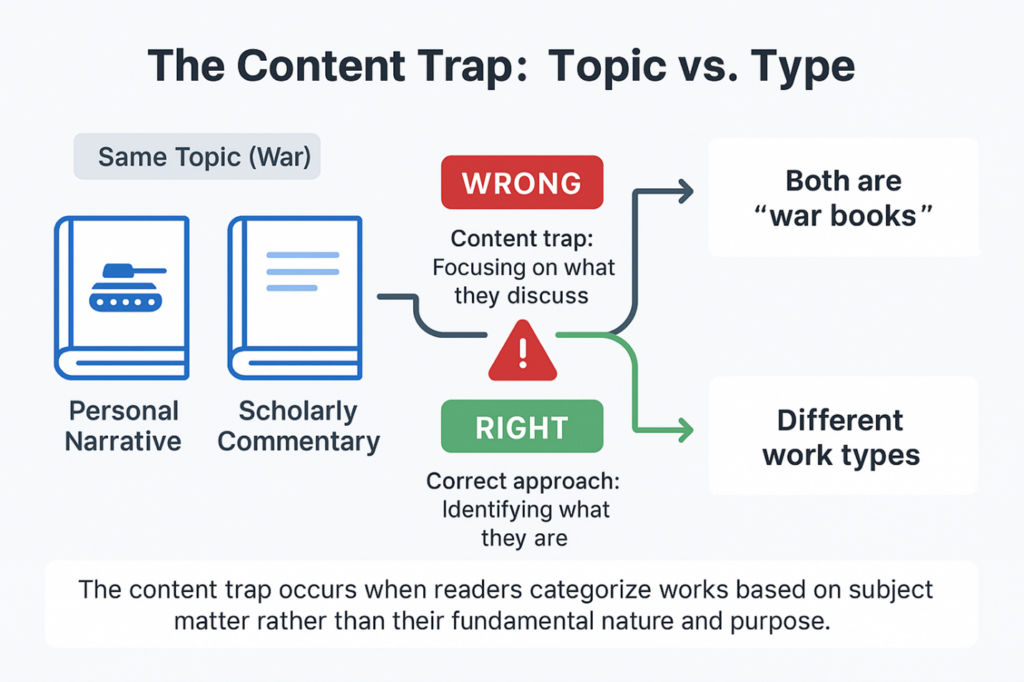
Consider this scenario: You’re browsing a bookstore and see two books. The first recounts one person’s experiences during World War II. The second analyzes the influence of wartime literature on modern poetry. Both books deal with war-related topics, but they serve completely different purposes and take entirely different forms.
The first is a personal narrative—one individual’s account of lived experiences. The second is scholarly commentary—an expert’s analysis of how certain works influenced other works. Yet because both involve war, a rushed reader might categorize them as “historical treatments of wartime topics.”
This same confusion appears regularly in GMAT RC, where students must precisely identify what types of works a passage describes. When the pressure is on and time is short, it’s tempting to focus on familiar keywords rather than carefully analyzing each work’s fundamental nature.
How the GMAT Tests This Distinction
GMAT passages frequently describe multiple scholarly works, publications, or research studies. Questions then ask you to characterize these works accurately—not based on their topics but based on what they actually are. The test makers design questions that reward distinguishing between content and purpose, requiring careful reading and clear thinking.
A passage might mention that two books were published in the same year, then ask you to identify what these books have in common. The wrong answer choices often contain accurate content descriptions but incorrect structural categorizations. For example:
“Recent scholarship has highlighted two important 1990s publications. Dr. Martinez wrote about her experiences treating patients during the AIDS crisis, providing a firsthand account of medical challenges in urban hospitals. Meanwhile, Professor Johnson’s groundbreaking study examined how contemporary poets incorporated themes of illness and recovery into their work.”
An incorrect answer might describe these as “two historical analyses of medical literature” because both deal with medical topics. But the correct answer would identify them as “a personal account and a scholarly commentary” because that’s what they fundamentally are, regardless of their shared medical content.
Actual GMAT question data reveals that approximately half of test-takers fall into this content trap on challenging questions, choosing answers that accurately describe subject matter but mischaracterize the works’ essential nature.
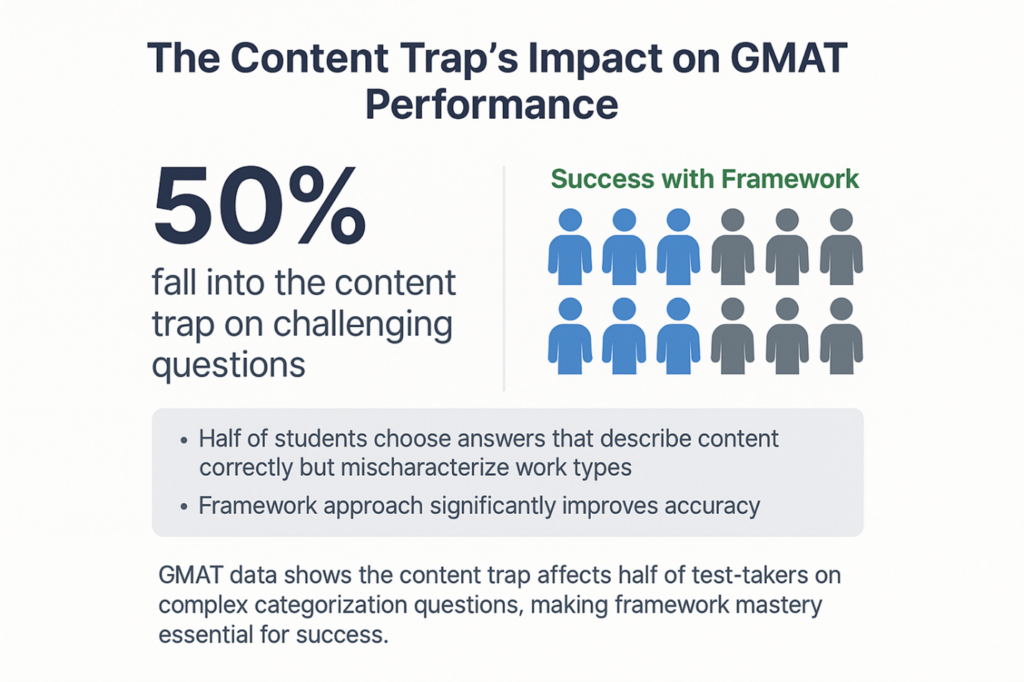
A Framework for Accurate Categorization
To avoid the content trap, use this three-step framework when analyzing any work described in a passage:
⚙️ 3-Step Framework for Work Categorization
Step 1: Identify the Primary Purpose
- Personal Account: Someone sharing their own experiences (memoir, autobiography, personal narrative)
- Scholarly Analysis: An expert studying, interpreting, or commenting on something (commentary, study, analysis)
- Creative Work: Original artistic expression (novel, poem, play)
- Reference Work: Compilation or collection for consultation (anthology, encyclopedia, bibliography)
Step 2: Determine the Format/Structure
- Narrative: Tells a story or recounts events
- Analysis: Examines, interprets, or critiques
- Collection: Gathers multiple works together
- Biography: Focuses on someone else’s life story
Step 3: Assess the Scope
- Individual Focus: Centers on one person, work, or specific topic
- Broad Survey: Covers multiple subjects, movements, or periods
- Comparative Study: Examines relationships between different subjects
Applying the Framework
Let’s see this framework in action with a simple example:
“The book recounts the author’s childhood experiences growing up in rural Montana during the Great Depression.”
- Primary Purpose: Personal Account (author’s own experiences)
- Format: Narrative (recounts experiences)
- Scope: Individual Focus (one person’s childhood)
- Categorization: Personal narrative/memoir
Compare this to: “The study examines how Depression-era literature reflected changing social values in rural America.”
- Primary Purpose: Scholarly Analysis (examines literature)
- Format: Analysis (examines and interprets)
- Scope: Broad Survey (multiple works and social changes)
- Categorization: Scholarly analysis/literary study
Both deal with Depression-era rural life, but they’re fundamentally different types of works.
Practice Exercises
❓ Exercise 1: Simple Categorization
“Johnson’s book details his friendship with the famous novelist, recounting their conversations and shared experiences over two decades.”
Using the framework:
- Primary Purpose: ?
- Format: ?
- Scope: ?
- Best categorization: ?
✅ Answer: Personal Account; Narrative; Individual Focus; Personal memoir/narrative
❓ Exercise 2: Complex Categorization
“Professor Chen’s comprehensive analysis traces the development of environmental themes in American poetry from 1960 to 2000, examining how poets like Gary Snyder and Mary Oliver influenced subsequent generations of writers. Meanwhile, Dr. Rodriguez published her detailed memoir of participating in early environmental protests, describing the personal challenges activists faced and the transformative experiences that shaped her environmental commitment during those pivotal years.”
Identify what best characterizes both works:
- Two historical surveys of environmental movements and their leaders
- A scholarly analysis and a personal narrative
- Two biographical studies of prominent environmental figures
- A collection of environmental poetry and a study of environmental prose
✅ Answer: B – The first work is scholarly analysis (traces development, examines influence across multiple authors); the second is personal narrative (detailed memoir of her own participation and personal experiences)
Key Takeaways
RC excellence requires moving beyond surface-level content to understand the fundamental nature of works described in passages. When you encounter questions asking you to categorize or characterize different publications:
- ✅ Ignore the topic and focus on purpose and structure
- ✅ Ask “What IS this work?” rather than “What does this work discuss?”
- ✅ Use the three-step framework to systematically analyze each work
- ⚠️ Watch for answer choices that accurately describe content but mischaracterize structure
⭐ Key Insight: Remember: the GMAT rewards precision in thinking, not just familiarity with topics. By learning to distinguish between what works discuss and what they fundamentally are, you’ll avoid the content trap and improve your accuracy on even the most challenging Reading Comprehension questions.


